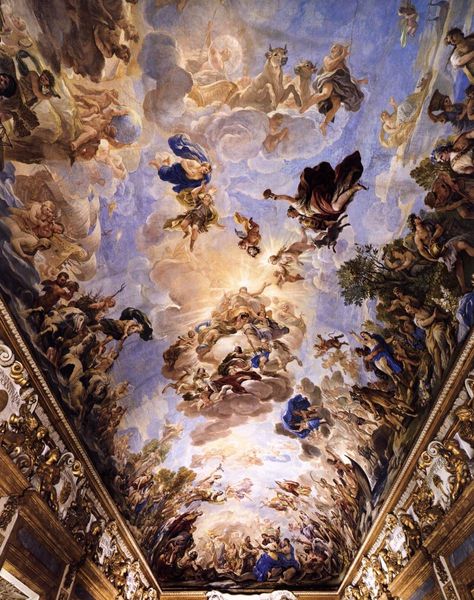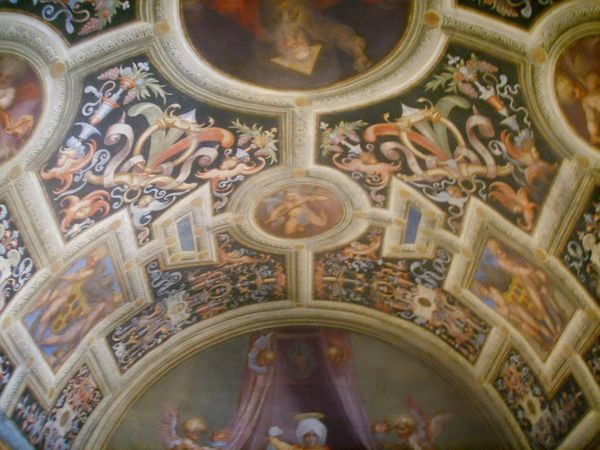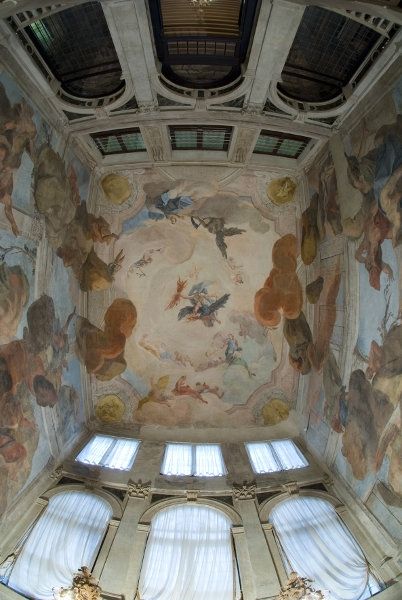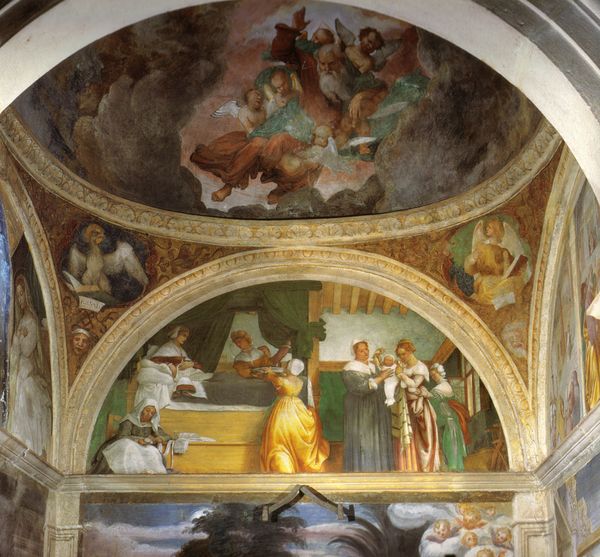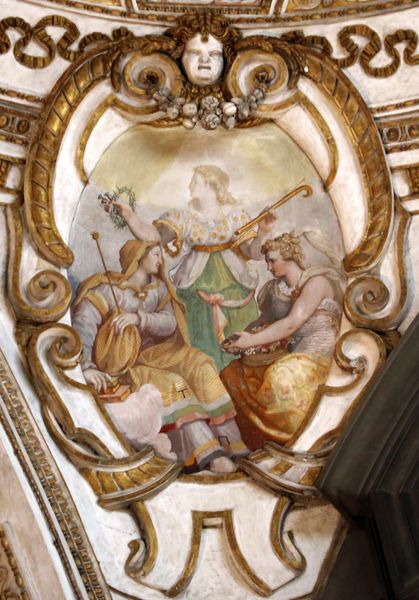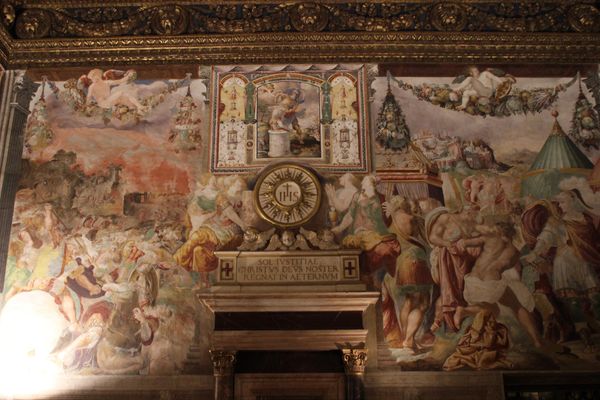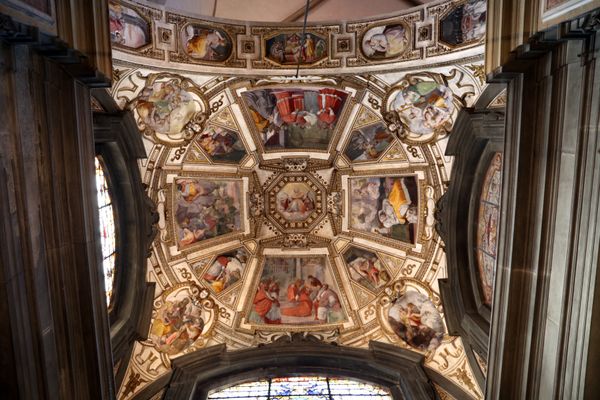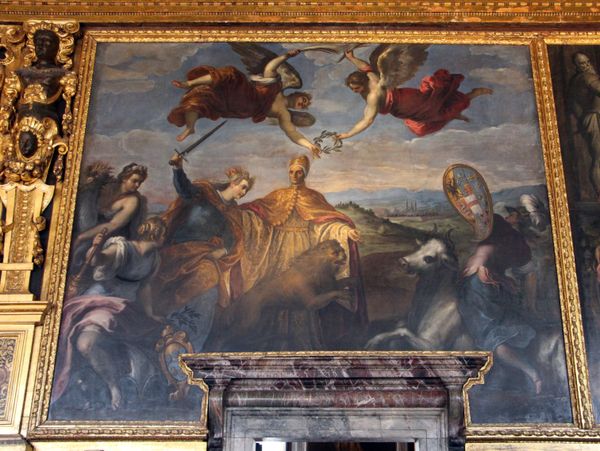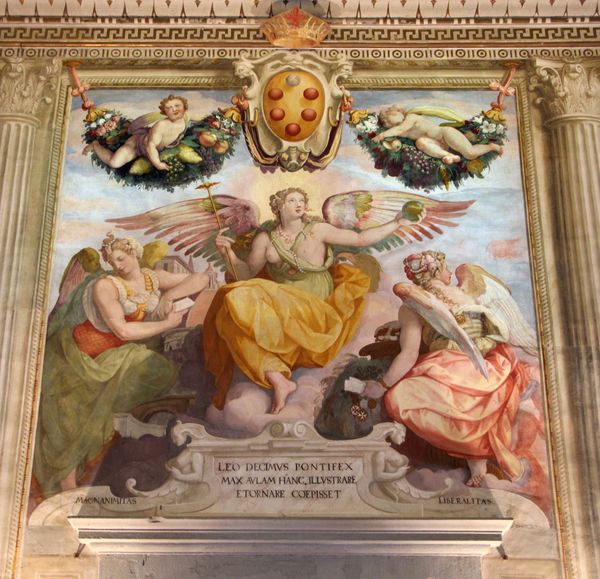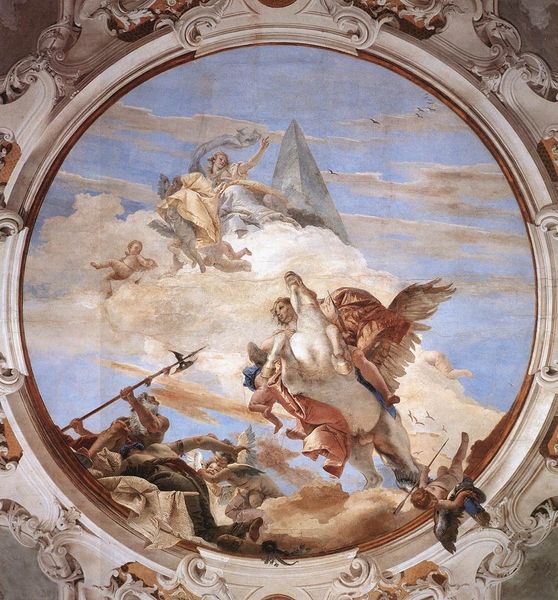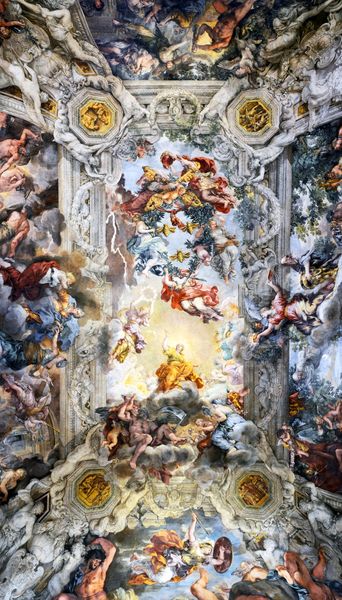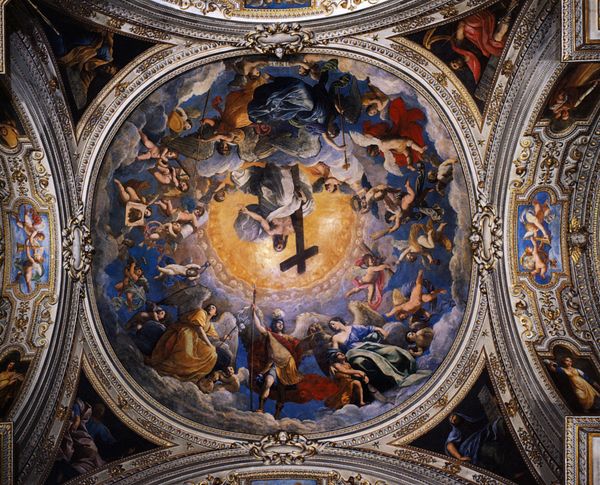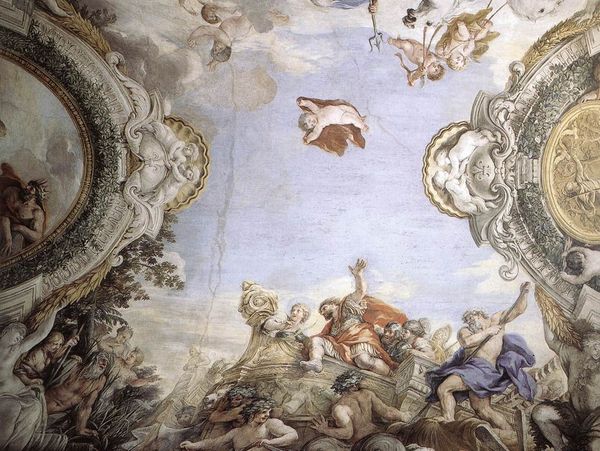
painting, fresco
#
allegory
#
narrative-art
#
baroque
#
painting
#
figuration
#
fresco
#
classicism
#
painting painterly
#
history-painting
Copyright: Public domain
Luca Giordano painted "The Triumph of Judith" using oil on a plastered ceiling, a technique known as fresco. Frescos demanded speed and precision, as the pigments needed to be applied while the plaster was still wet. This encouraged a gestural, fluid style. Look closely, and you'll notice how the light seems to emanate from the painting itself; Giordano masterfully exploited the reflective qualities of the plaster to achieve this ethereal effect. Painting on such a grand scale was a monumental undertaking, requiring a team of skilled assistants. These artisans would have prepared the plaster, mixed the pigments, and assisted with the execution of the design, working under Giordano's direction. The labor involved reflects the value placed on artistry and craftsmanship at the time. The finished work transcends the sum of its materials and techniques, inviting us to appreciate the artistry and collaborative effort that went into its creation.
Comments
No comments
Be the first to comment and join the conversation on the ultimate creative platform.
